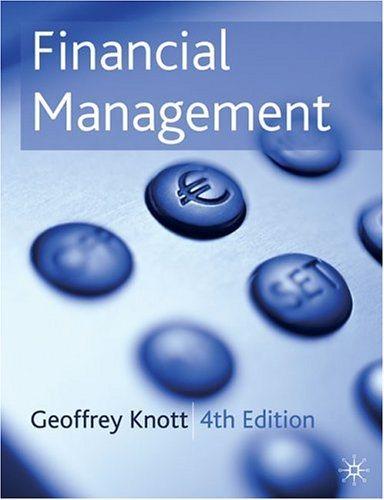Answered step by step
Verified Expert Solution
Question
1 Approved Answer
Weighted Average Cost of Capital You are part of a team that is planning to present to the strategic planning and investment committee your company
Weighted Average Cost of Capital
You are part of a team that is planning to present to the strategic planning and
investment committee your companys weighted average cost of capital. You
plan in discussing the appropriate weights, how the WACC is used in capital
budgeting and in corporate valuation, and any adjustments or other factors that
could impact the overall cost of capital.
The company utilizes three forms of capital in funding projects. Your job is to
estimate the effective cost of each and then to calculate the companys weighted
average cost of capital.
Below is useful data that will help you in your analysis:
Current year treasury rate
Current Market Risk Premium
Companys debt is rated A A rated debt usually carries a premium to
comparable treasuries
Bond Data:
The company has two semiannual coupon bonds that are traded in the market.
The first bond has a coupon and is currently priced at $ The bond is
callable in years at $ The second bond has a coupon and is currently
priced at $ and is callable in years at $ Both bonds mature in years
and have a face of $ The companys tax rate is
Preferred Data
The company has outstanding preferred stock that has a coupon and matures
in years. It is not callable. The par value is $ and it currently sells for $
If they were to sell additional preferred, they would incur flotation costs of
Common Stock
The companys beta The current stock price is $ and the expected
dividend next year D $ It is expected that the dividend will grow at a
constant rate of indefinitely.
Questions
Using a target capital structure of debt, common stock and
preferred, what is the weighted average costs of capital that will be used to
assess new projects?
For this problem assume that all common stock is raised as retained earnings and
that any additional debt that is used will be above the companys current
longterm cost of borrowing. Current estimated cost
Using the same target capital structure, recalculate the WACC, assuming
that there are no retained earnings, and that new common equity issuance
will incur a flotation cost of Only reconfigure your cost of equity using
the market implied cost of equity method do not use the CAPM and keep
other component costs the same.
Why are there flotation costs when issuing new common equity?
If a company has projects that have different levels of risk, how should they
account for that when incorporating the WACC?
Why does it make sense that debt is usually the cheapest form of capital
and why doesnt the firm just borrow of the capital needed?
Why is it better to use a longerterm cost of borrowing when calculating
the WACC?
Step by Step Solution
There are 3 Steps involved in it
Step: 1

Get Instant Access to Expert-Tailored Solutions
See step-by-step solutions with expert insights and AI powered tools for academic success
Step: 2

Step: 3

Ace Your Homework with AI
Get the answers you need in no time with our AI-driven, step-by-step assistance
Get Started


